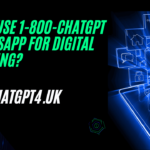AI chatbots have become increasingly popular in various industries for providing efficient and personalized customer support. Building your own AI chatbot may seem like a complex task, but with the advancements in artificial intelligence and the availability of powerful APIs like ChatGPT, it has become more accessible than ever before.
In this article, we will guide you through the process of building your own AI chatbot using the ChatGPT API, enabling you to create a conversational agent that can understand and respond to user queries effectively.
Understanding ChatGPT API:
ChatGPT API is a powerful tool offered by OpenAI that allows developers to integrate the ChatGPT model into their applications and services.
With this API, you can send a series of messages to the model and receive a response for each message, creating an interactive conversation between the user and the chatbot. The model is trained on a diverse range of internet text, making it capable of generating human-like responses.
Setting Up Your Environment:
To get started, you need to set up your development environment. Ensure that you have Python installed on your system along with the necessary packages such as requests, which will be used to make API calls. You will also need an OpenAI account to obtain an API key for accessing the ChatGPT API.
Authenticating and Making API Calls:
Once you have obtained your API key, you can authenticate your requests by including it in the Authorization header. The API follows a “prompt-response” format, where you send a list of messages to the model and receive a list of responses. Each message in the list has two properties: ‘role’ (which can be ‘system’, ‘user’, or ‘assistant’) and ‘content’ (the actual text of the message).
Here’s an example of making an API call to the ChatGPT API using Python:
import requests
API_KEY = 'your_api_key'
API_URL = 'https://api.openai.com/v1/chat/completions'
def send_message(message):
headers = {
'Content-Type': 'application/json',
'Authorization': f'Bearer {API_KEY}'
}
payload = {
'messages': [{'role': 'user', 'content': message}]
}
response = requests.post(API_URL, json=payload, headers=headers)
return response.json()['choices'][0]['message']['content']
# Example usage
response = send_message("Hello, AI Chatbot!")
print(response)
Designing the Conversation Flow:
To create a meaningful conversation with your AI chatbot, you need to design the conversation flow by carefully structuring the messages you send to the model.
For example, you can start with a system message to instruct the assistant or provide context, followed by user messages containing user inputs or queries. You can alternate between user and assistant messages to build a back-and-forth conversation.
def chat_with_bot():
print("AI Chatbot: Hello! How can I assist you today?")
while True:
user_input = input("User: ")
response = send_message(user_input)
print("AI Chatbot:", response)
Enhancing the Chatbot’s Capabilities:
While the ChatGPT model is highly capable, you can enhance the performance of your AI chatbot by fine-tuning the conversation flow and refining the user prompts. You can experiment with different message structures, provide more context in system or user messages, and ask the user for clarifications if necessary. Additionally, you can integrate external APIs or databases to fetch information or perform specific tasks.
Handling Errors and Edge Cases:
It’s important to handle errors and edge cases in your AI chatbot to ensure a smooth user experience. The model might generate incorrect or nonsensical responses, so you can implement techniques such as input validation, intent recognition, or fallback mechanisms to handle such situations gracefully. Regularly testing and iterating on your chatbot’s performance will help you identify and address any weaknesses.
Implementing Natural Language Understanding (NLU):
To make your AI chatbot more intelligent and context-aware, you can incorporate Natural Language Understanding (NLU) techniques. NLU allows the chatbot to extract important information and intents from user messages.
By using NLU libraries or services like spaCy, NLTK, or Dialogflow, you can perform tasks such as entity recognition, sentiment analysis, and intent classification. These techniques enable your chatbot to provide more accurate and relevant responses.
Training and Fine-Tuning:
While the ChatGPT model is pre-trained on a vast amount of data, you can further fine-tune it using your own dataset or custom prompts. Fine-tuning helps align the model’s behavior with your specific use case and domain.
By providing additional examples and training data, you can enhance the chatbot’s understanding of specific topics, improve the quality of responses, and align it with your desired conversational style.
Handling User Context and Memory:
In conversations, users often refer back to previous messages or expect the chatbot to remember certain information. To handle user context and memory, you can store relevant information from previous interactions, such as user preferences or dialogue history.
By maintaining a stateful conversation, you can ensure continuity and improve the chatbot’s ability to understand user intents and respond accurately.
Monitoring and Evaluation:
Once your AI chatbot is deployed, it’s crucial to monitor its performance and gather user feedback. Monitor the chatbot’s interactions, analyze user feedback, and track key metrics such as response accuracy, user satisfaction, and conversation completion rates.
This data will help you identify areas for improvement, discover common user queries, and continuously enhance the chatbot’s capabilities over time.
Ensuring Privacy and Security:
As your chatbot interacts with users, it’s essential to prioritize privacy and security. Ensure that sensitive user information is handled securely, implement data encryption measures, and adhere to privacy regulations.
It’s also a good practice to provide clear guidelines to users regarding the storage and usage of their data, establishing trust and transparency in the chatbot’s operations.
Continuous Iteration and Improvement:
Building an AI chatbot is an iterative process. Regularly gather user feedback, analyze conversational logs, and identify patterns or areas where the chatbot can be improved.
Use this feedback to iterate on the conversation flow, enhance the chatbot’s knowledge base, and refine its responses. By embracing a continuous improvement mindset, you can create a chatbot that becomes more effective and engaging over time.
Conclusion:
Building your own AI chatbot using the ChatGPT API opens up a world of possibilities for creating interactive and personalized conversational experiences. By implementing NLU, fine-tuning the model, handling user context, and prioritizing privacy and security, you can develop a powerful AI chatbot that caters to the needs of your users.
Remember to continuously monitor, evaluate, and iterate on your chatbot to ensure it stays relevant, efficient, and user-friendly. Embrace the power of AI chatbots and unlock the potential of conversational AI in your applications and services.
Frequently Asked Questions (FAQs)
Q: What is an AI chatbot?
An AI chatbot is a computer program that uses artificial intelligence techniques to simulate human-like conversations with users. It can understand user queries, provide relevant responses, and engage in interactive dialogue.
Q: How does the ChatGPT API work?
The ChatGPT API allows developers to integrate the ChatGPT model into their applications. By sending a series of messages to the API, developers can create a conversational flow between the user and the chatbot. The API responds with generated messages based on the input, enabling interactive conversations.
Q: What can I use the ChatGPT API for?
The ChatGPT API can be used for various applications, such as building customer support chatbots, creating virtual assistants, enabling interactive storytelling experiences, or integrating conversational AI into your software or services.
Q: Can I customize the behavior of my AI chatbot?
While the ChatGPT model provides a solid foundation, you can customize the behavior of your AI chatbot to some extent. You can fine-tune the model with your own datasets, prompts, or examples to align it with your specific use case and desired conversational style.
Q: How do I handle errors or incorrect responses from the chatbot?
Handling errors and incorrect responses is important for a good user experience. You can implement techniques like input validation, intent recognition, or fallback mechanisms to identify and handle such situations. Regularly testing and iterating on your chatbot’s performance will help you improve its accuracy and response quality.
Q: Can I make my chatbot understand specific topics or domains?
Yes, you can train your chatbot to understand specific topics or domains by providing it with relevant training data. By fine-tuning the model or incorporating NLU techniques, you can enhance the chatbot’s ability to handle specific subject matters and provide more accurate responses.
Q: How do I ensure the privacy and security of user data?
Ensuring privacy and security is crucial when developing an AI chatbot. You should implement data encryption measures, adhere to privacy regulations, and handle sensitive user information securely. Clearly communicate your data storage and usage policies to users to establish trust and transparency.
Q: Can I deploy my AI chatbot on different platforms?
Yes, the ChatGPT API allows you to deploy your AI chatbot on various platforms and integrate it into different applications or services. You can use the API to make HTTP requests and receive responses, making it versatile for deployment across web, mobile, or other platforms.
Q: How can I improve the performance of my AI chatbot?
To improve the performance of your AI chatbot, you can regularly gather user feedback, analyze conversational logs, and identify areas for improvement. Iterate on the conversation flow, refine responses, and continuously train the model with new data to enhance its capabilities over time.
Q: Where can I find more resources for building AI chatbots?
OpenAI provides comprehensive documentation and guides for using the ChatGPT API. You can also explore online communities, developer forums, and tutorials that offer insights, best practices, and code examples for building AI chatbots using different frameworks and tools.
Remember to refer to the official documentation and resources to get the most up-to-date and accurate information for building your own AI chatbot with the ChatGPT API.







